- Home
- Articles
- Architectural Portfolio
- Architectral Presentation
- Inspirational Stories
- Architecture News
- Visualization
- BIM Industry
- Facade Design
- Parametric Design
- Career
- Landscape Architecture
- Construction
- Artificial Intelligence
- Sketching
- Design Softwares
- Diagrams
- Writing
- Architectural Tips
- Sustainability
- Courses
- Concept
- Technology
- History & Heritage
- Future of Architecture
- Guides & How-To
- Art & Culture
- Projects
- Interior Design
- Competitions
- Jobs
- Store
- Tools
- More
- Home
- Articles
- Architectural Portfolio
- Architectral Presentation
- Inspirational Stories
- Architecture News
- Visualization
- BIM Industry
- Facade Design
- Parametric Design
- Career
- Landscape Architecture
- Construction
- Artificial Intelligence
- Sketching
- Design Softwares
- Diagrams
- Writing
- Architectural Tips
- Sustainability
- Courses
- Concept
- Technology
- History & Heritage
- Future of Architecture
- Guides & How-To
- Art & Culture
- Projects
- Interior Design
- Competitions
- Jobs
- Store
- Tools
- More
Simple & Creative Interior Design Ideas for Kids Rooms: Inspire & Delight
Discover simple and creative interior design ideas to transform your child's room into a joyful, adaptable haven. Our guide focuses on playful color schemes, smart storage, and modular furniture to foster creativity and growth. Emphasize safety and functionality with budget-friendly options, while engaging kids in the design process to reflect their personalities.
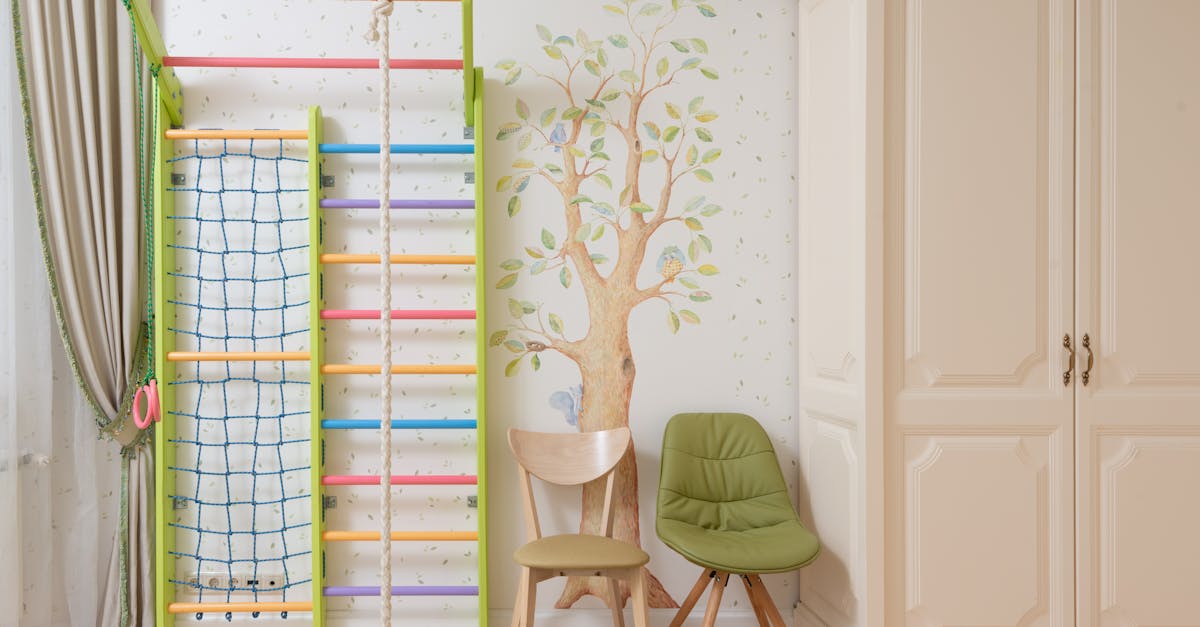
Designing a kid’s room can be a delightful adventure, where creativity meets functionality. As parents, we want to create a space that sparks joy and imagination while also being practical and adaptable as our little ones grow. With a few simple and creative interior design ideas, we can transform any room into a magical haven that reflects their unique personalities and interests.
Let’s explore how small changes can make a big impact. From playful color palettes to innovative storage solutions, the possibilities are endless. Whether we’re working with a small nursery or a spacious playroom, there’s always a way to add charm and character without breaking the bank. By focusing on versatile elements and clever design tricks, we can craft a room that’s not only visually appealing but also a nurturing environment for our kids to thrive.

Table of Contents
ToggleUnderstanding Kids’ Needs
Kids’ rooms serve as a personal haven for play, study, and rest. Balancing these activities requires recognizing the diverse needs children have. Younger kids often thrive in spaces with stimulating colors, which can foster creativity and excitement. For example, walls adorned with bright hues like yellow and blue may inspire imaginative play.
Older children may prefer areas conducive to homework and quiet activities. Designated homework zones with adequate lighting and ample desk space can enhance concentration. Colorful shelves and bins can balance organization with a touch of youthful fun.
Flexibility in furniture choices supports growth and changing interests. Modular furniture, like stackable shelves or adjustable desks, can adapt as kids’ needs evolve. These solutions help maintain a functional yet playful environment.
Inviting kids into the design process strengthens their connection to the space. Letting them choose bed linens or wall decals can make them feel valued and spark excitement about their room. This empowerment fosters a sense of ownership and personal expression.
Safety remains a priority in all design aspects. Rounded furniture edges, secure fixtures, and non-slip rugs protect against accidents during active play. We should always ensure that materials used are non-toxic and eco-friendly, contributing to a healthier environment for growing kids.
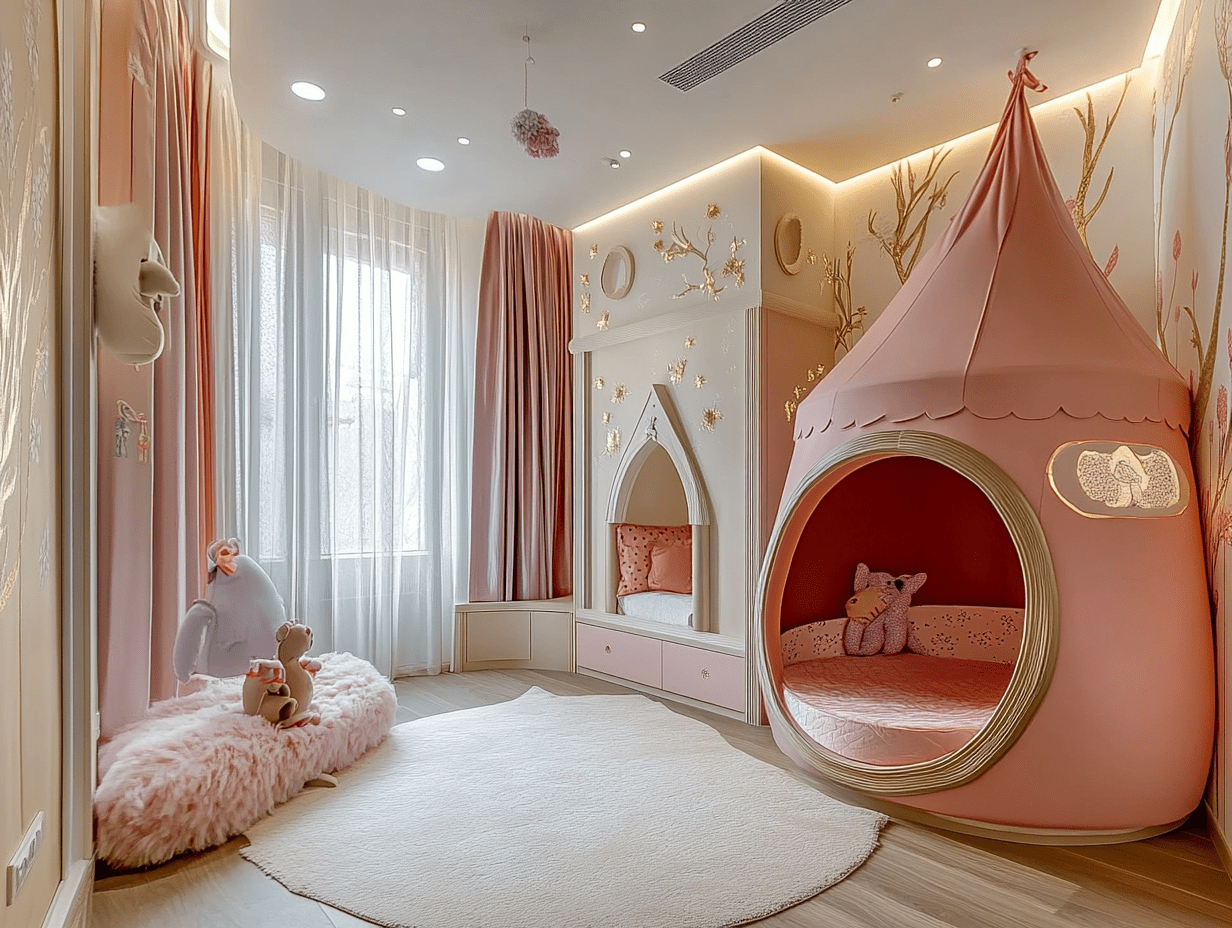
Simple Design Elements
Simple design elements can transform a kid’s room into a lively and functional space. By focusing on a few key areas, we can create a room that’s both fun and practical.
Color Schemes
Color schemes play a crucial role in setting the room’s atmosphere. We choose bright colors like yellow, blue, and green to stimulate creativity for younger kids. Soft pastels, such as lavender and mint, provide a calming effect for areas meant for rest. Using a combination of accent walls and colorful accessories can add depth without overwhelming the space.
Furniture Choices
Furniture choices impact the room’s versatility. We select modular furniture to accommodate a child’s changing needs. Convertible beds, adjustable desks, and stackable chairs allow for quick reconfiguration as kids grow. Prioritizing pieces with rounded edges enhances safety and reduces injury risks during play.
Storage Solutions
Innovative storage solutions keep the room organized. We use multi-functional items like storage ottomans and bed frames with drawers to maximize space. Wall-mounted shelves and hooks provide additional storage without taking up floor space. Clearly labeled bins make it easier for kids to keep their belongings tidy and accessible.
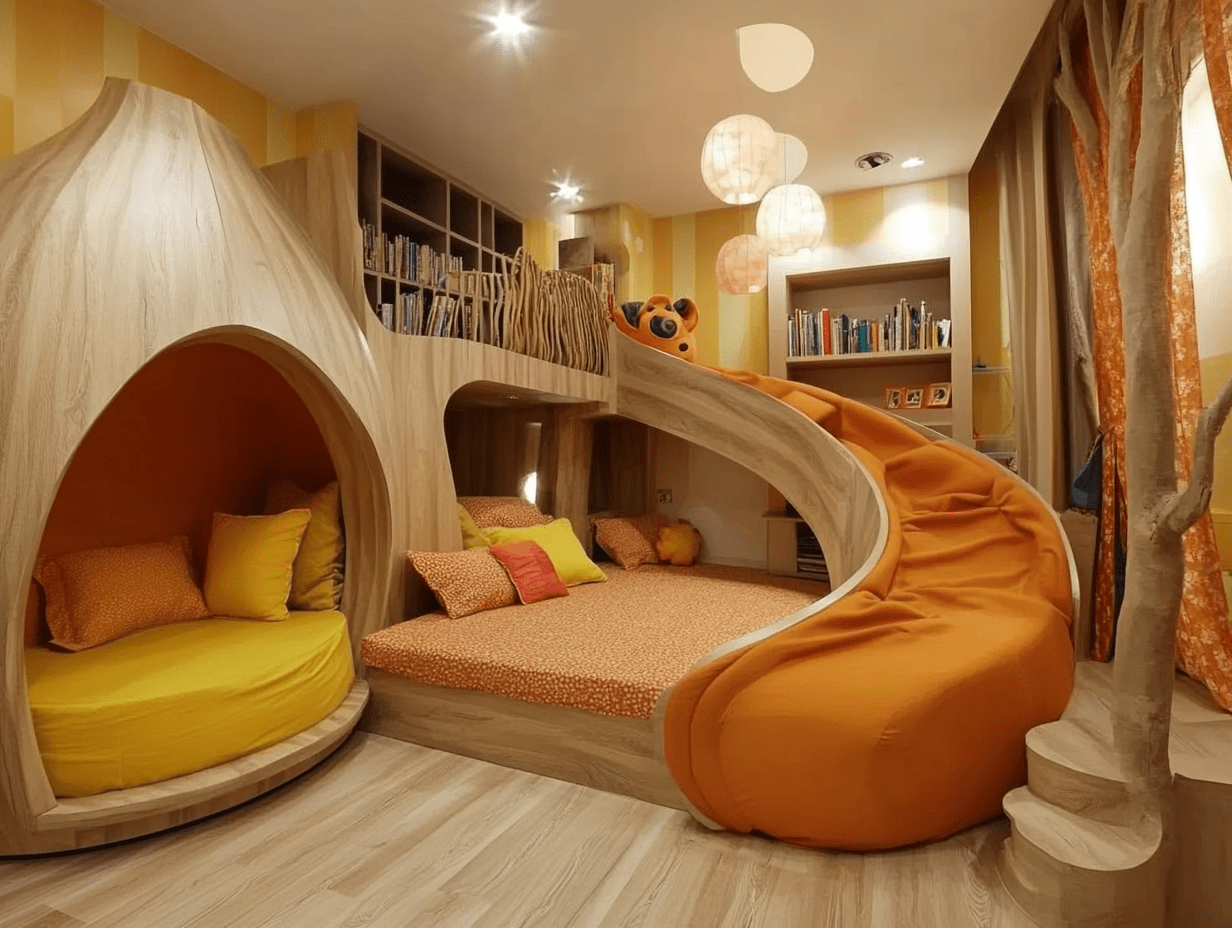
Creative Touches in Design
Infusing creativity into a kid’s room keeps it vibrant and engaging. We explore how thematic decor and DIY projects can add those special touches.
Thematic Decor
Themed decor offers endless possibilities to transform a child’s space. Whether enchanted forests or superhero hideouts, themes capture a child’s imagination. We can introduce themed wallpaper or decals, which are easy to update as interests change. Bedding, rugs, and curtains can also reflect a room’s theme, enhancing consistency. Combining themes with functional design keeps the room lively yet practical.
DIY Projects
DIY projects foster creativity and add personalized flair to a room. Hand-painted murals or custom crafts like wall art bring a unique touch. Involving kids in creating items like picture frames or customized storage boxes makes the process engaging. Simple projects like constructing a chalkboard wall or crafting decorative garlands can refresh the room while nurturing a child’s creativity. Engaging in DIY enhances both the room and our bond with our kids.
Safety and Functionality
When designing a kid’s room, prioritizing safety and functionality is crucial. We must choose furniture with rounded edges to prevent injuries during playtime. Additionally, securing heavy items like bookshelves and dressers to the wall reduces the risk of tipping. Using non-toxic paints and materials helps create a healthy environment, free from harmful chemicals.
Functionality enhances a room’s usability as a child grows. We can incorporate multi-purpose furniture, such as bunk beds with storage or desks that convert into play tables, to maximize space. Modular designs offer flexibility, adapting to changing needs over time.
Sufficient lighting, both natural and artificial, is essential. We should opt for adjustable lighting solutions, like dimmer switches or movable lamps, to cater to various activities, from study sessions to bedtime reading. Considering these aspects, we’re able to craft a space that’s safe, practical, and adaptable for our children.
Beyond choosing the right safety features, selecting the perfect piece of furniture is about investing in a comfortable and durable item that can last for years. When considering options for a growing child, you should search for terms like kids beds Australia or children’s bedroom furniture to ensure you find a retailer right in your local area that specializes in quality, safe designs.
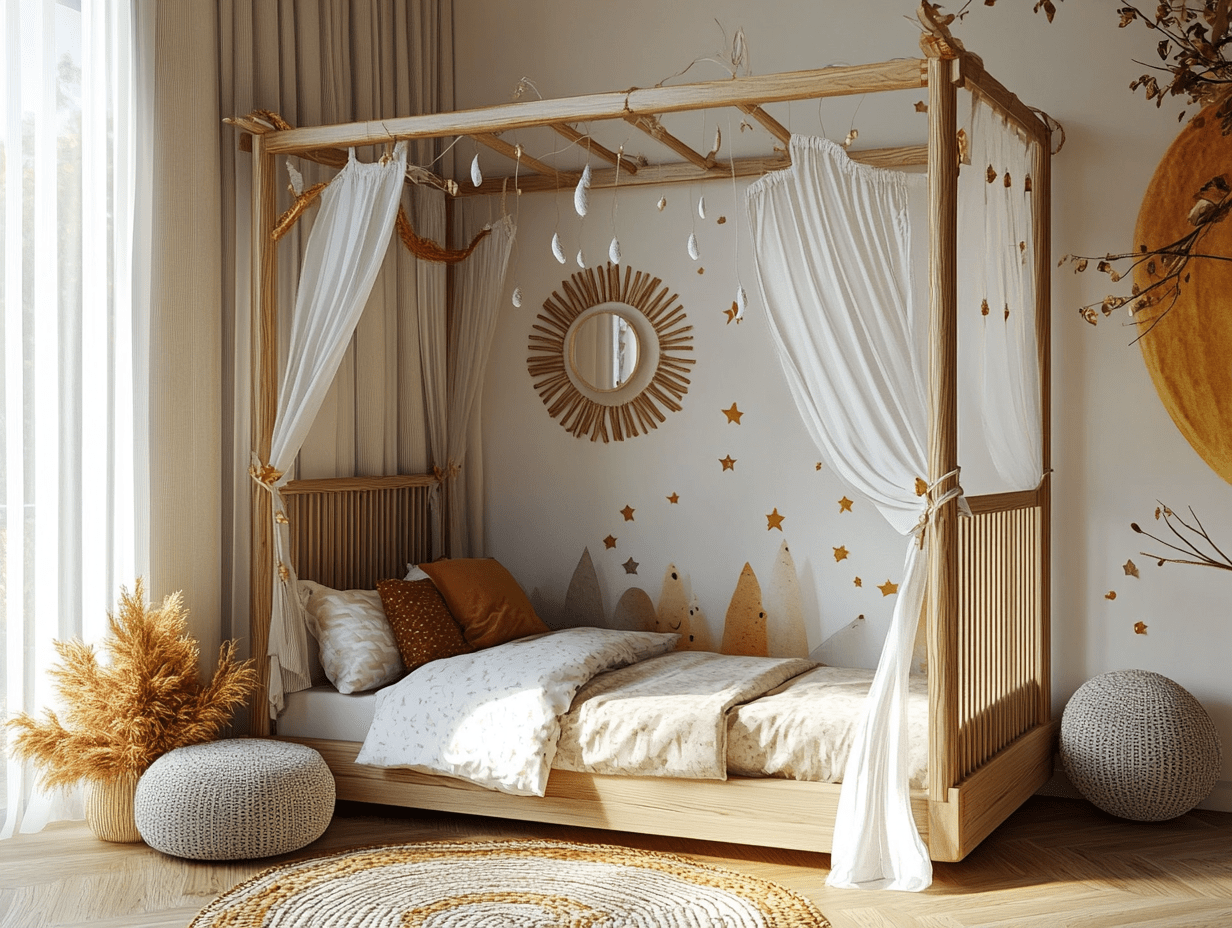
Budget-Friendly Tips
Designing a kid’s room creatively doesn’t require a big budget. Strategic choices and resourceful ideas can transform spaces without overspending.
Affordable Materials
Choosing cost-effective materials is crucial. Instead of expensive wall coverings, we can opt for budget-friendly paint to refresh walls, offering vibrancy and warmth. Peel-and-stick wallpaper provides a stylish look without a hefty price tag and is easy to change as tastes evolve. For flooring, area rugs add comfort and splashes of color without replacing the entire floor, making them a smart, budget-conscious choice.
Upcycling Ideas
Upcycling not only saves money but also introduces unique elements. Repurposing old furniture with a fresh coat of paint or new knobs gives it a new life and personal touch. We can transform wooden crates into bookshelves or storage units, maintaining organization and character. Using fabric scraps or outgrown clothing to create decorative pillows or wall art can add personalized, charming details to the room.
- affordable kids room decor
- bedroom themes for kids
- children's room furniture ideas
- colorful kids room themes
- creative kids room ideas
- DIY kids room design
- eco-friendly children's room design
- fun kids room decor
- kids bedroom decoration
- kids room interior design
- modern children's bedroom ideas
- nursery room decor
- personalized kids room designs
- playroom interior design
- practical kids room layouts
- simple children's room designs
- small kids room solutions
- space-saving kids furniture
- unique ideas for kids rooms
2 Comments
Submit your architectural projects
Follow these steps for submission your project. Submission FormLatest Posts
BXB Studio’s Hybrid Interior: Redefining the Modern Architectural Workplace
The Warsaw headquarters of BXB Studio was established in a modest 70...
5 Must-Know Interior Design Trends in American Homes
From warm minimalism to bold oversized artwork, these five interior design trends...
How Open Kitchens Create a Sense of Space Indoors (Without Sacrificing Function)
Open kitchens: see how sightlines, lighting, and smart layouts make rooms feel...
The Revival of Chunky Fiber Crafts in Modern Interior Design
Contemporary interior architecture has shifted away from hard minimalism. After a decade...





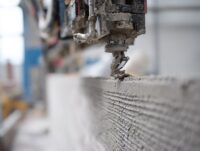


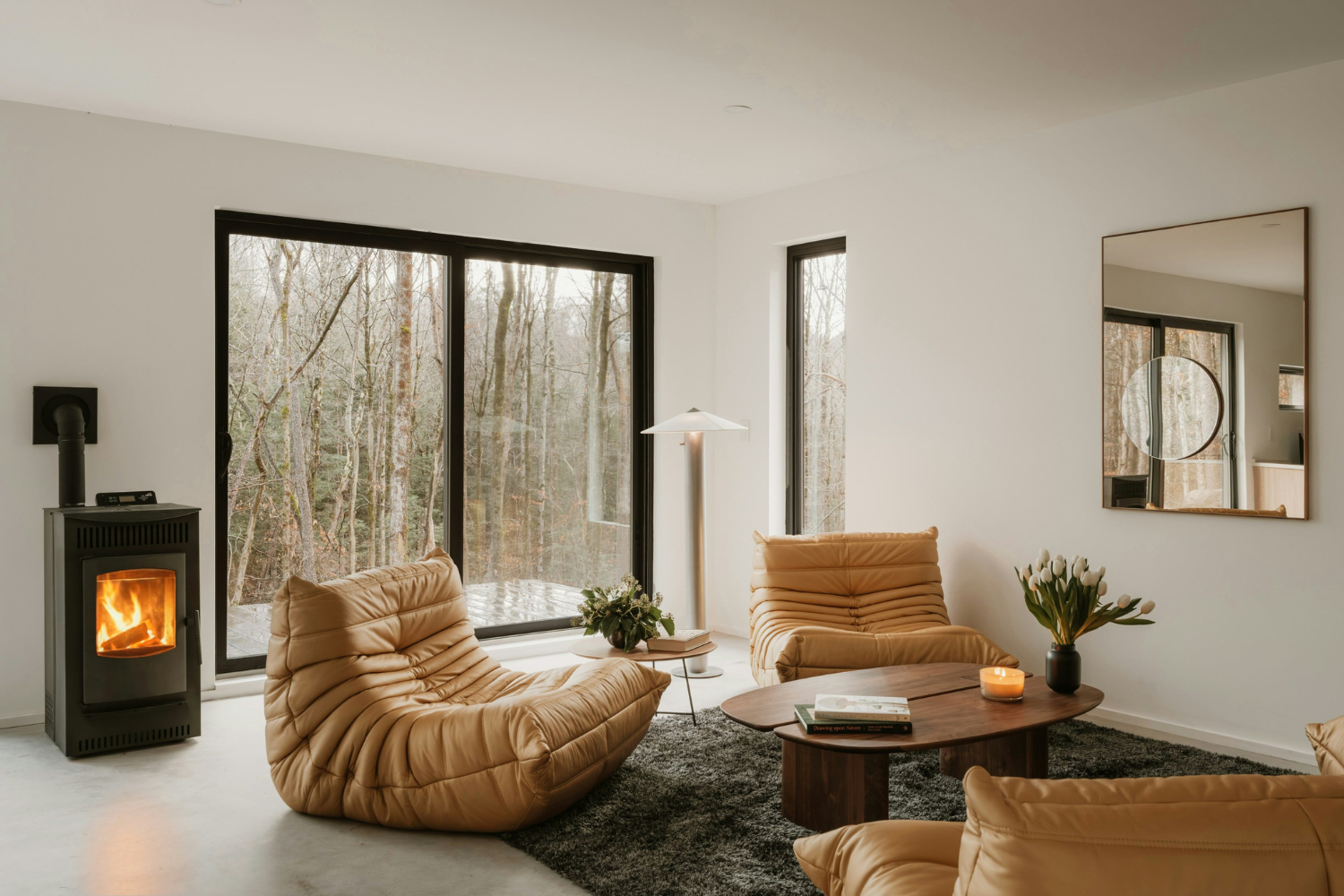
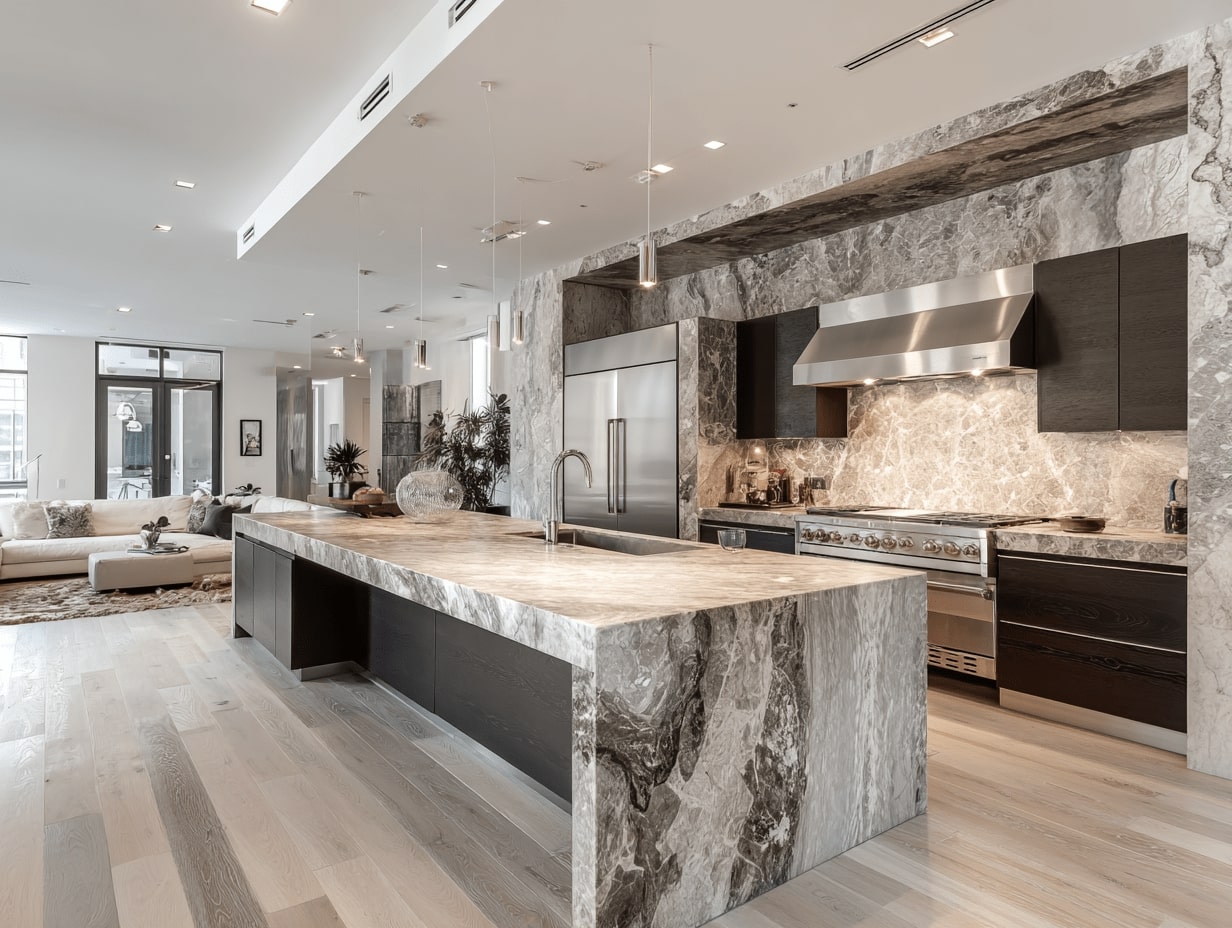
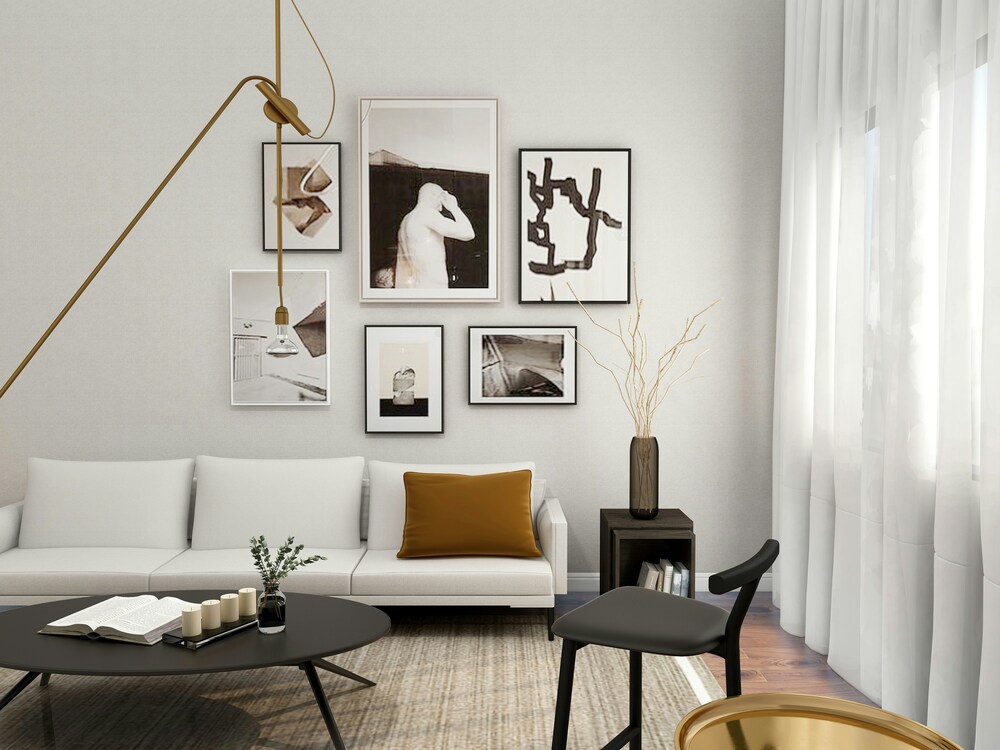
I love the idea of using bright colors in kids’ rooms! It really helps make the space fun and exciting for them. Also, letting kids pick their own decorations is a great way to get them involved.
This article has some great tips for designing a kid’s room! I especially like the suggestions for storage solutions. Keeping things organized can be so helpful for kids when they want to play or do homework.